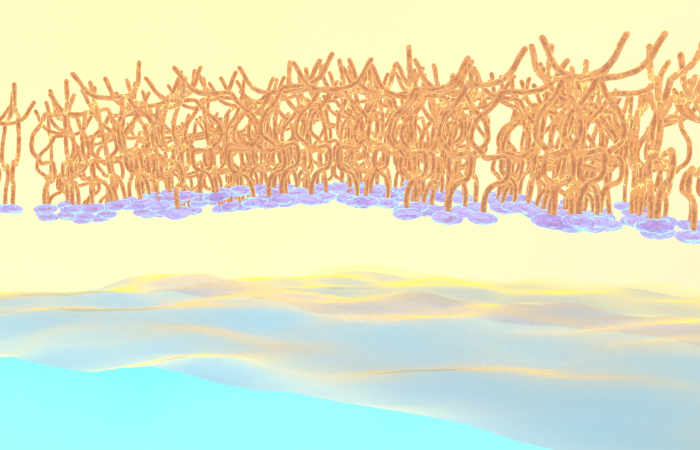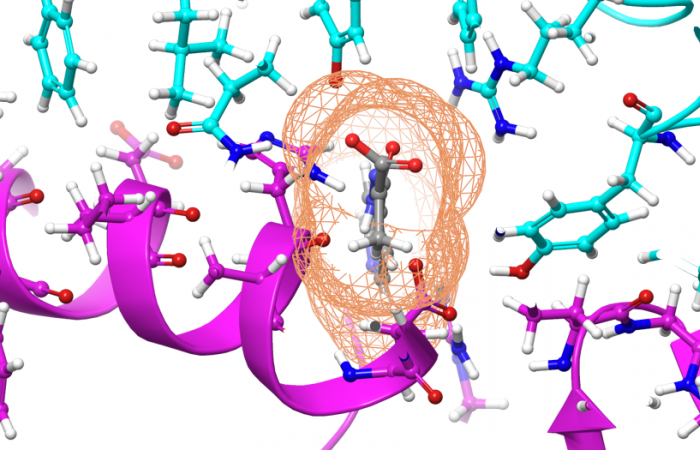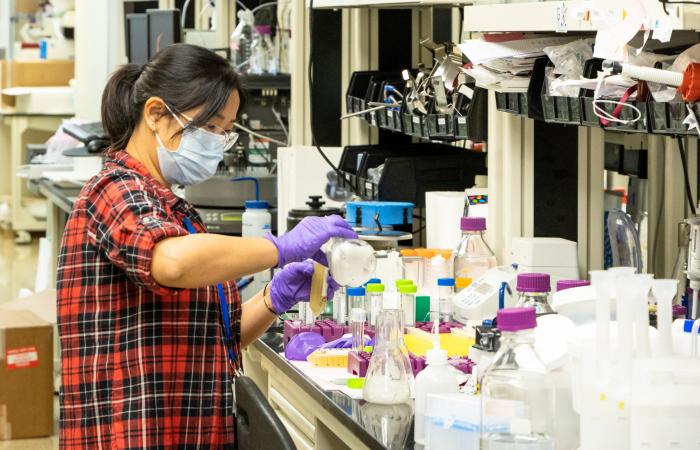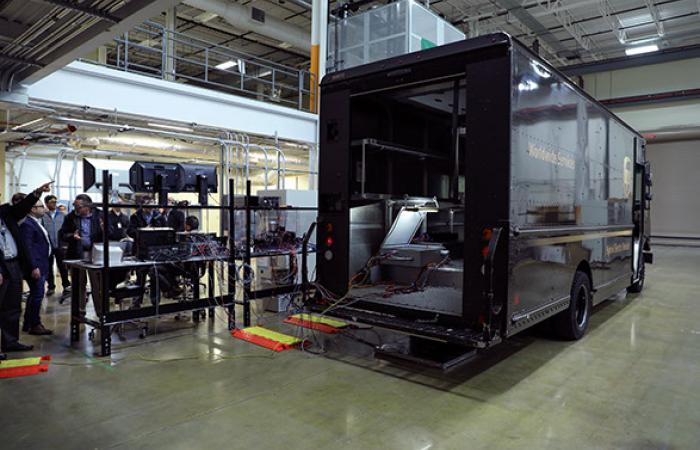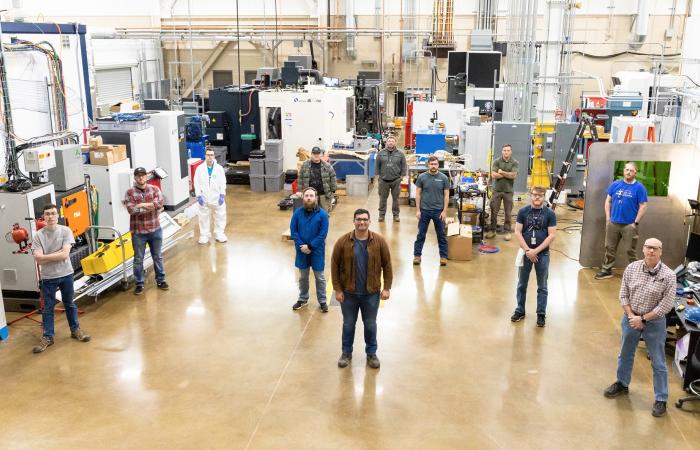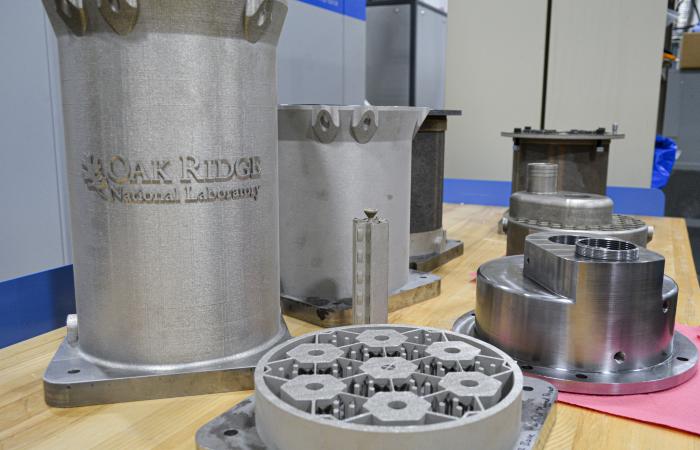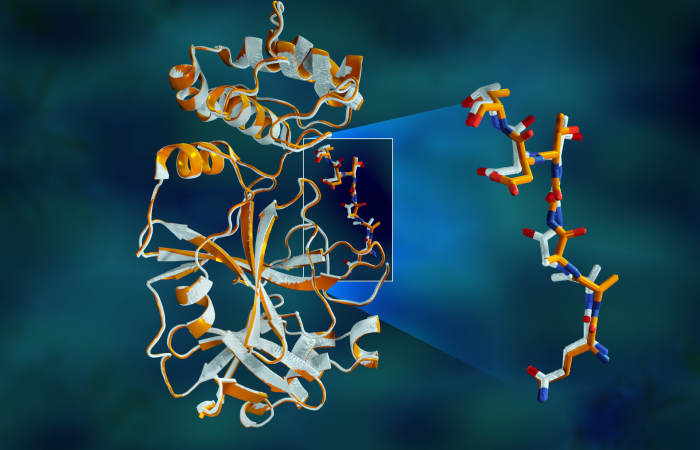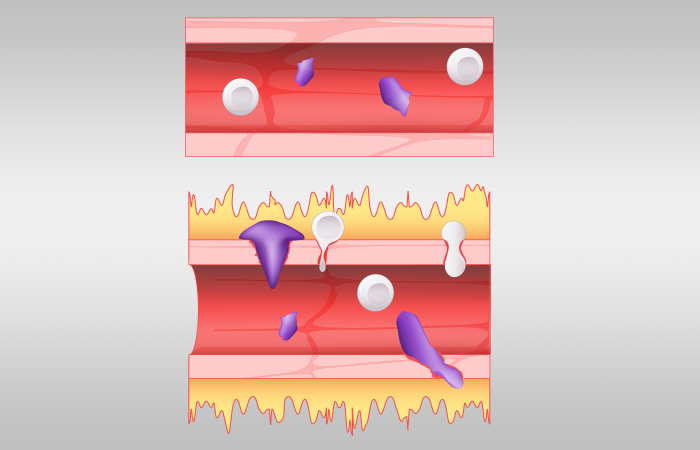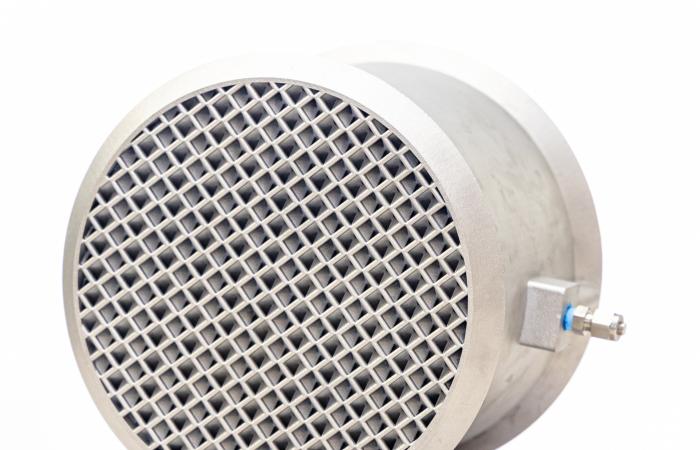Oak Ridge National Laboratory’s news stories in 2020 highlighted the lab’s diverse scientific and technology portfolio, as well as its role in the fight against COVID-19.
Some of our most-read news stories include:
Polymers get caught up in love-hate chemistry of oil and water
(Feb. 27) Researchers at ORNL and the University of Tennessee achieved a rare look at the inner workings of polymer self-assembly at an oil-water interface to advance materials for neuromorphic computing and bio-inspired technologies.
Early research on existing drug compounds via supercomputing could combat coronavirus
(March 5) Researchers at ORNL used Summit, the nation’s most powerful and smartest supercomputer, to identify 77 small-molecule drug compounds that merited consideration in the fight against the SARS-CoV-2 coronavirus responsible for the COVID-19 disease outbreak.
ORNL is in the fight against COVID-19
(April 15) In the race to identify solutions to the COVID-19 pandemic, ORNL applied expertise and provided remote access to its world-leading supercomputing and neutron facilities for researchers around the world to conduct critical scientific studies on SARS-CoV-2, while working to support local communities in need of financial support and access to educational resources.
Successful delivery: ORNL demonstrates bi-directional wireless charging on hybrid UPS truck
(April 21) Researchers at ORNL demonstrated a 20-kilowatt bi-directional wireless charging system installed on a UPS medium-duty, plug-in hybrid electric delivery truck. The project was the first of its kind to achieve power transfer at this rate across an 11-inch air gap, advancing the technology to a new class of larger vehicles with higher ground clearance.
Advanced manufacturing innovation helps industry in COVID-19 fight
(May 4) Researchers at the Manufacturing Demonstration Facility and Carbon Fiber Technology Facility at ORNL used materials science, fiber production and additive manufacturing expertise and capabilities to provide U.S. industry with necessary resources to mass produce healthcare supplies in record time.
3D-printed nuclear reactor promises faster, more economical path to nuclear energy
(May 11) ORNL researchers refined their design of a 3D-printed nuclear reactor core through the Transformational Challenge Reactor demonstration program. TCR’s unprecedented approach to nuclear energy leverages advances from ORNL in manufacturing, materials, nuclear science, nuclear engineering, high-performance computing, data analytics and related fields.
X-rays size up protein structure at the ‘heart’ of COVID-19 virus
(June 25) A team of researchers at ORNL and Argonne National Laboratory performed the first room-temperature X-ray measurements on the SARS-CoV-2 main protease — the enzyme that enables the virus to reproduce.
Computational gene study suggests new pathway for COVID-19 inflammatory response
(July 28) Analyses of lung fluid cells from COVID-19 patients conducted on Summit, the nation’s fastest supercomputer, pointed to gene expression patterns related to the bradykinin system that may explain the runaway symptoms produced by the body’s response to SARS-CoV-2.
ORNL-produced plutonium-238 to help power Perseverance on Mars
(July 29) After its long journey to Mars beginning this summer, NASA’s Perseverance rover will be powered across the planet’s surface in part by plutonium produced at ORNL. Mars 2020 will be the first NASA mission that uses ORNL-produced plutonium-238.
Novel 3D-printed device demonstrates enhanced capture of carbon dioxide emissions
(Aug. 19) ORNL researchers have designed and additively manufactured a first-of-its-kind aluminum device that enhances the capture of carbon dioxide emitted from fossil fuel plants and other industrial processes. Solutions for reducing global emissions of heat-trapping greenhouse gases such as CO2 address the continued use of low-cost, domestic fossil fuel resources while mitigating potential climate impacts.
ORNL is managed by UT-Battelle for the Department of Energy's Office of Science, the single largest supporter of basic research in the physical sciences in the United States. DOE’s Office of Science is working to address some of the most pressing challenges of our time. For more information, please visit https://energy.gov/science.



